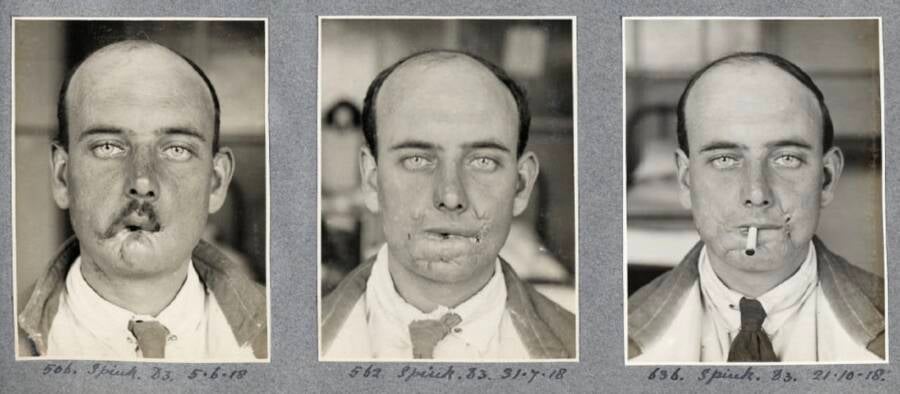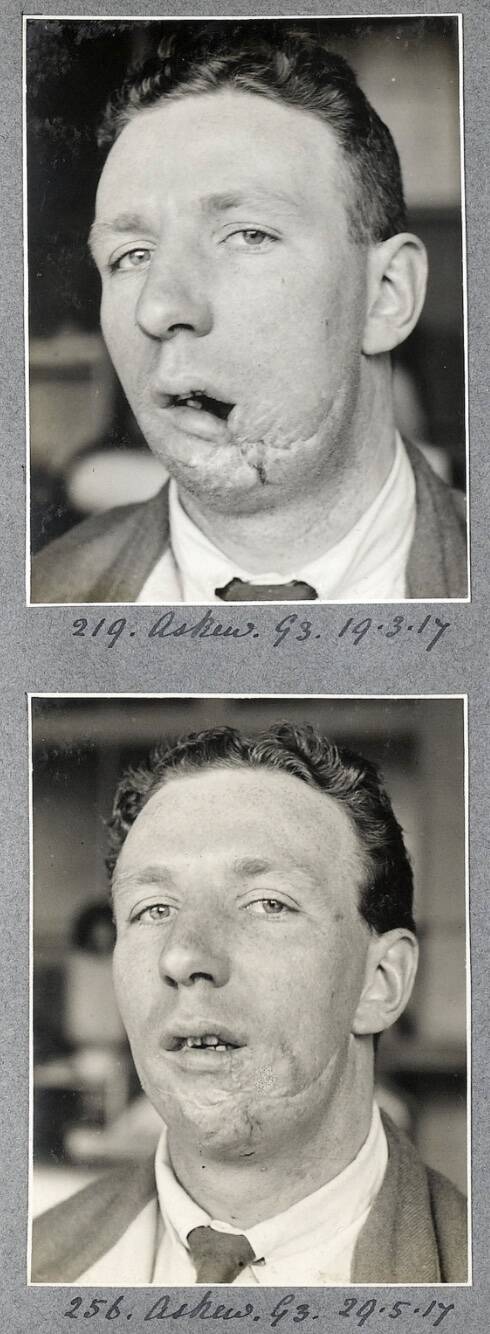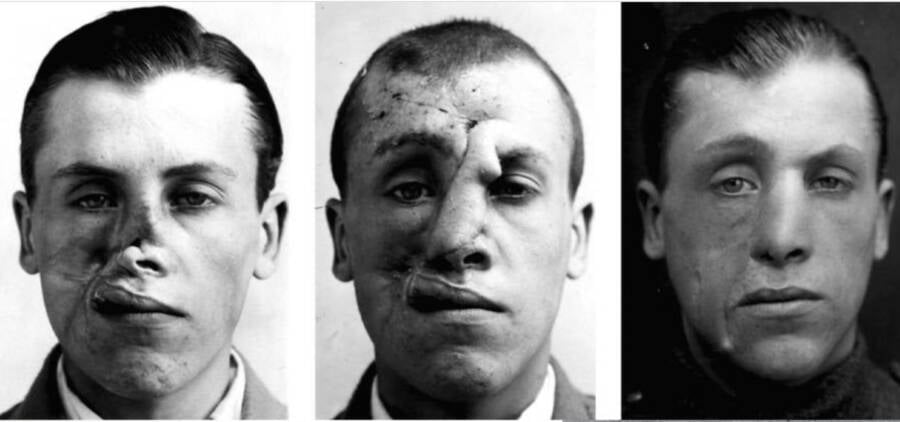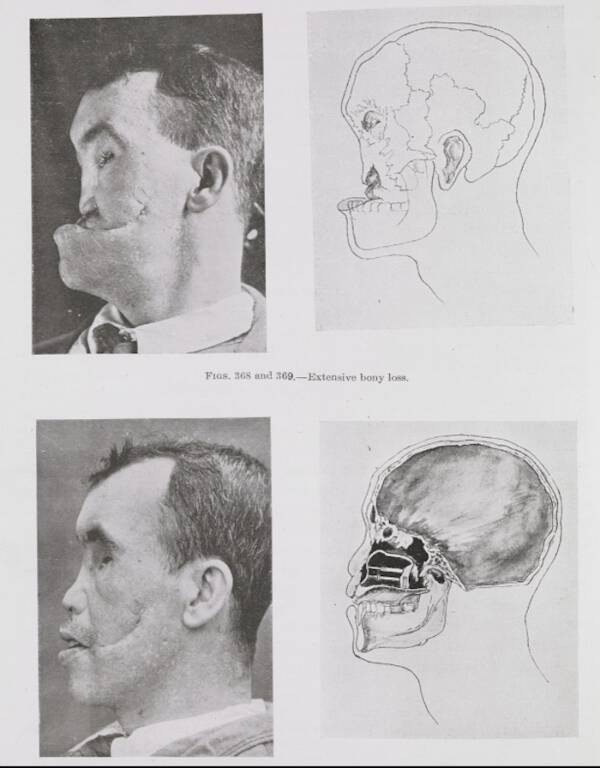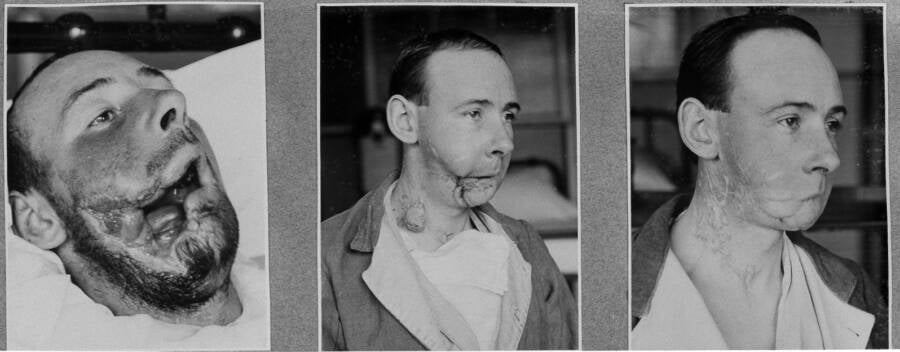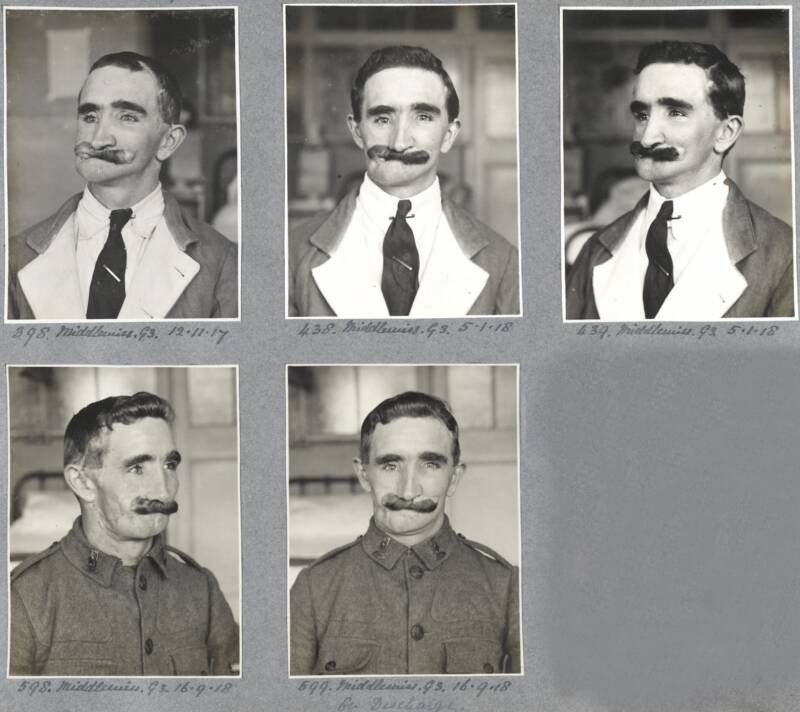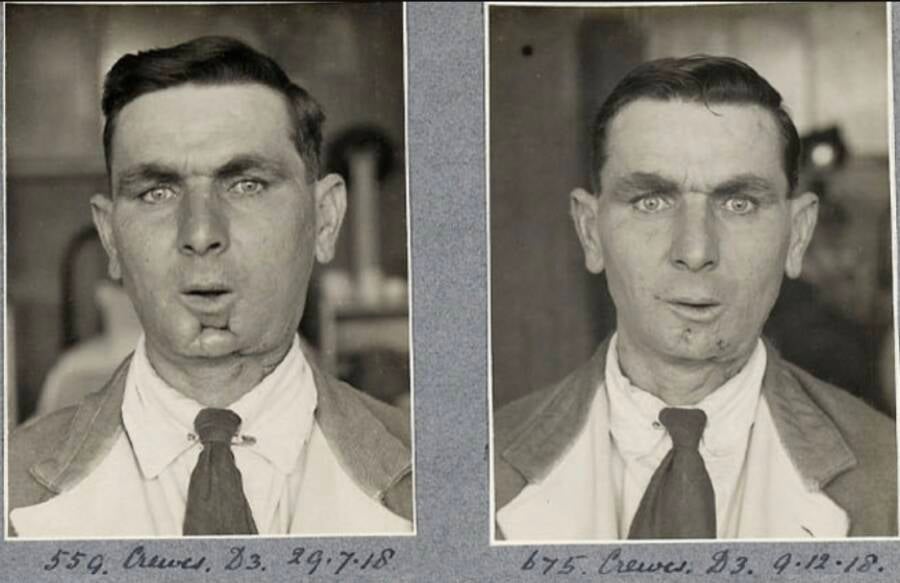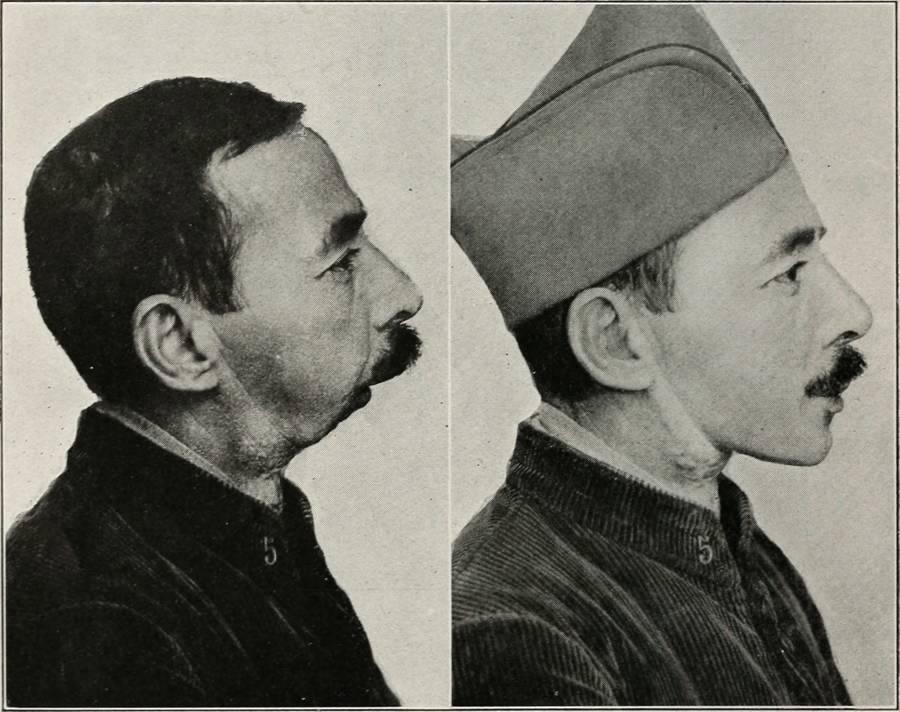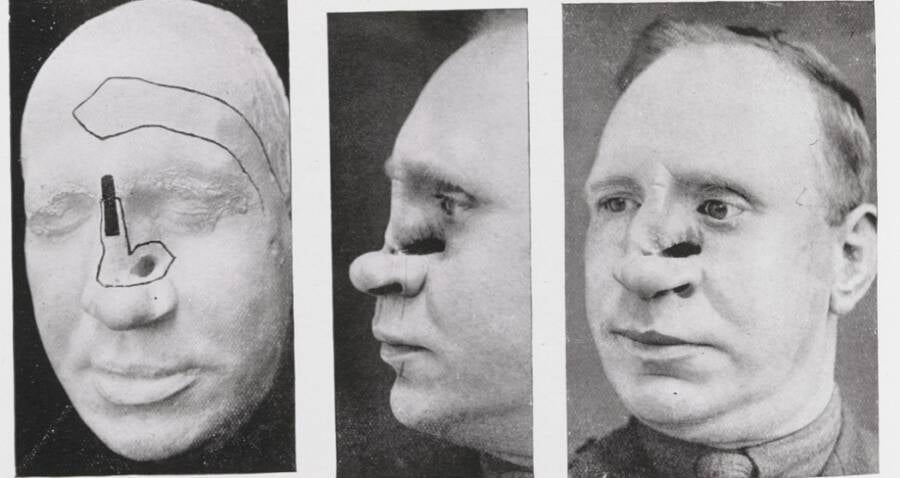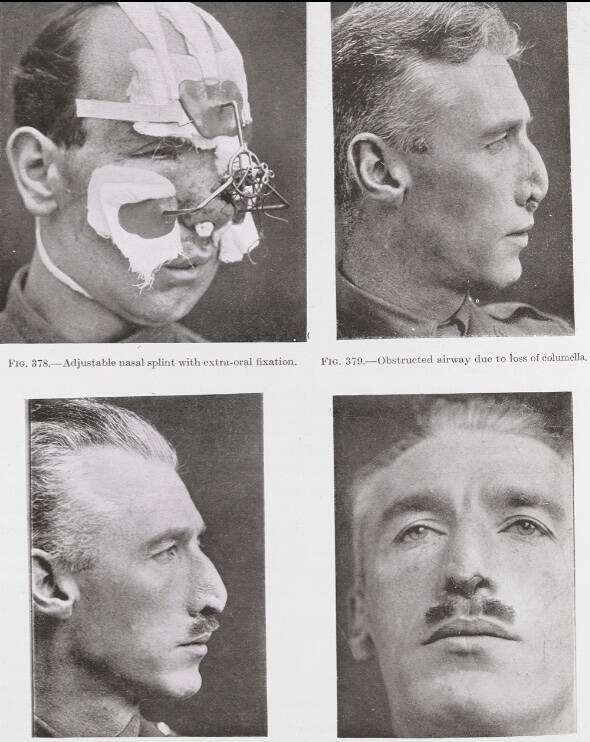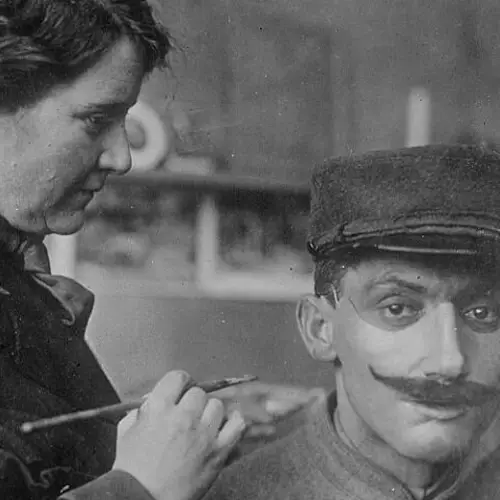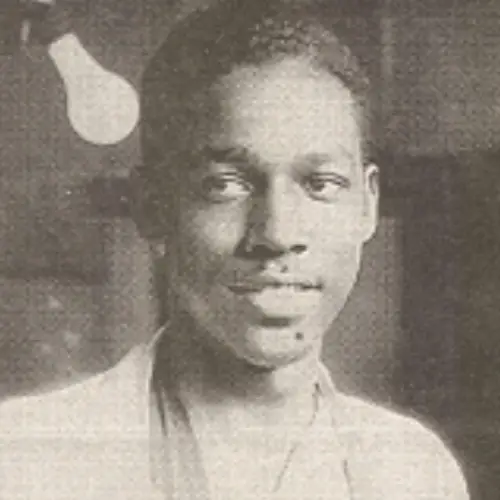From 1917 to 1925, Dr. Harold Gillies performed more than 11,000 operations for over 5,000 wounded World War I veterans in Britain.
World War I left millions of soldiers dead and millions more wounded. New and advanced battlefield technologies pummeled human bodies, often leaving behind horrific scars. And around 280,000 soldiers came home from the war with brutal facial injuries.
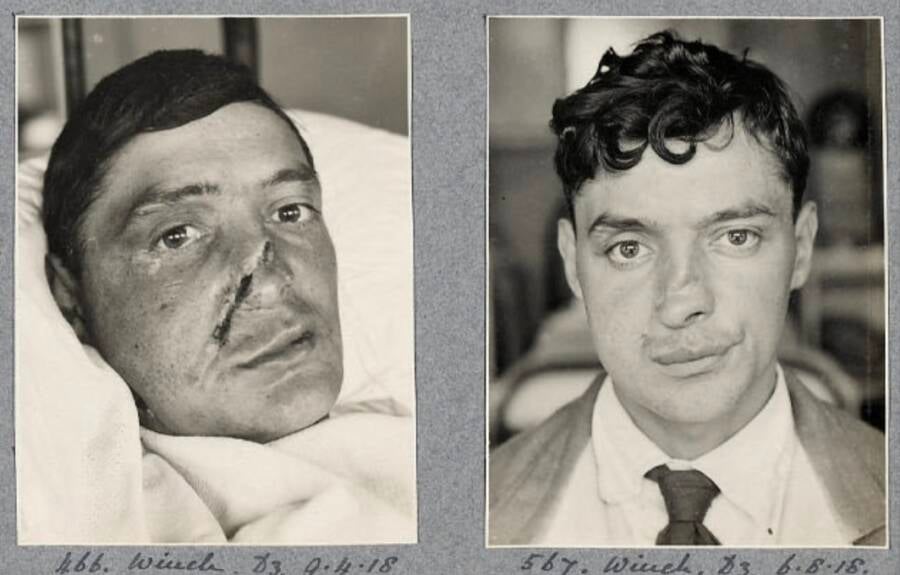
The FacemakerA soldier identified as Winch, who was treated by surgeon Harold Gillies after experiencing a facial injury on the battlefield. The “before” photo was taken in April 1918 and the “after” photo was taken in August 1918.
When British soldiers returned from war with these wounds, they were called the “loneliest Tommies.” If they ventured from the hospital, they were told to sit on bright blue benches so the public could avoid looking at them.
But one surgeon named Dr. Harold Gillies was determined to help patients with facial injuries. And in doing so, he pioneered modern plastic surgery.
Reactions To Wounded World War I Soldiers
As trench warfare raged on during World War I, soldiers sustained far more facial injuries than in previous wars. When men ventured above the trench, they could easily be hit with bullets or shrapnel. "They seemed to think they could pop their heads up over a trench and move quickly enough to dodge the hail of machine-gun bullets," complained one World War I surgeon.
In August 1917, a shell fragment hit British soldier John Glubb in the face. "The floodgates in my neck seemed to burst," Glubb later recalled, according to London's National Army Museum. "And the blood poured out in torrents."
Glubb felt as though he had a chicken bone in his mouth. In fact, it was actually half of his jaw, detached and floating around. And although Glubb ultimately survived the war, his life would never be the same.
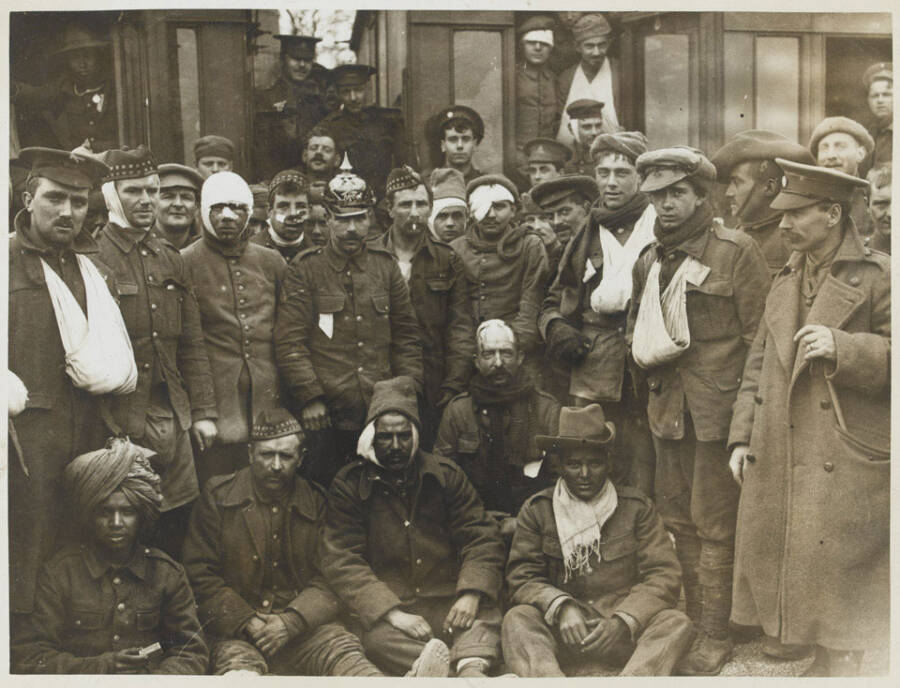
National Army MuseumA 1915 photograph of wounded World War I soldiers en route to the hospital.
As medical historian Lindsey Fitzharris explained in her Gillies biography The Facemaker, "the reactions could be very extreme" for veterans who returned to civilian life after suffering facial injuries on the battlefield.
"This was a time when losing a limb made you a hero, but losing a face made you a monster," she said in an interview with NPR.
What happened to these wounded veterans? According to inspector Robert Tait McKenzie, who visited convalescent hospitals during the war, these soldiers often became "victims of despondency, of melancholia, leading, in some cases, even to suicide." But then, Harold Gillies stepped in.
The Surgical Treatments Of Harold Gillies
Harold Gillies was one of few medical professionals at the time who focused specifically on treating facial injuries and helping despondent soldiers.
Born on June 17, 1882, in Dunedin, New Zealand, Harold Delf Gillies eventually moved to England for his education and trained to become a surgeon. Though it was clear he had a keen scientific mind, many were also impressed by his skills as a painter. His eye for aesthetics would later help him change thousands of people's lives during World War I.
Shortly after the "war to end all wars" began, Gillies volunteered for the Royal Army Medical Corps. Initially posted to France, he had a front-row seat to the grisly facial injuries that many soldiers suffered there. Gillies was later transferred to England, where he petitioned the British War Office to build a hospital devoted to rebuilding the faces of wounded veterans.
By 1917, he had received permission to open The Queen's Hospital, the first facility in the world that only treated facial injuries. And he got to work.
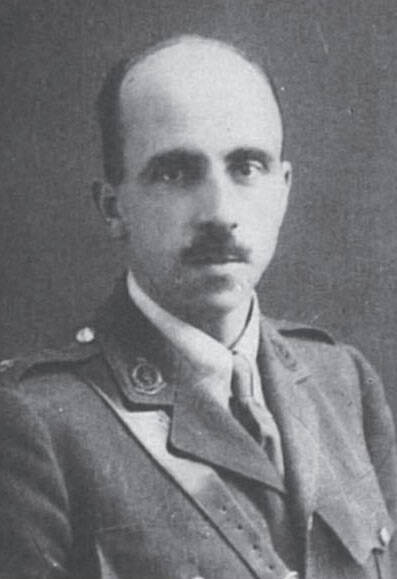
National Army MuseumSurgeon Harold Gillies later became known as the father of modern plastic surgery.
To treat his patients, Gillies worked tirelessly on developing new methods to rebuild bones and skin grafting techniques to reconstruct soft tissue. Remarkably, he also banned mirrors in some sections of his hospital so that newly wounded soldiers wouldn't be upset when they saw their injuries.
But of course, Harold Gillies couldn't do all the work by himself. He soon realized that his hospital would require specialists. Mask makers created custom masks for patients, while dental surgeons helped rebuild jaws and mouths. X-ray technicians captured images that showed the extent of the damage. And his fellow surgeons performed multiple procedures to heal patients.
As Fitzharris explained, "Gillies is really operating without a net... He doesn't have anybody teaching him how to do this. He's really got to make this up."
As a pioneering plastic surgeon, Gillies did not rely on artificial implants. Instead, he believed in replacing skin with skin. When repairing bone, the surgeon often took bone from the patient's body. Certain body parts like ribs and thighs provided cartilage and bone to rebuild the face.
The Motivation Behind Harold Gillies' Pioneering Work
As he worked, Dr. Harold Gillies balanced two goals. He wanted to restore the face's function, making it possible for men to eat and speak. But he also prioritized aesthetics. Gillies wanted his patients to reenter society without worrying about the stigma attached to facial injuries in the early 1900s.
"This was a strange new art," Gillies said of his plastic surgery work, "and unlike the student today, who is weaned on small scar excisions and gradually graduated to a single harelip, we were suddenly asked to produce half a face."
World War I ended in 1918. But the need for plastic surgery continued. Ultimately, Gillies provided more than 11,000 operations for over 5,000 men from 1917 to 1925. And many of his patients were grateful for his services.

British LibraryHarold Gillies published a book that shared his knowledge of facial plastic surgery.
Gillies then continued in private practice for years. When World War II broke out, he once again leaped into action to help British soldiers.
But even during times of peace, Gillies did whatever it took to improve his patients' lives — performing some of the first sex reassignment surgeries on transgender people during the late 1940s and early 1950s.
Indeed, Dr. Harold Gillies remained devoted to his work even in his final days. He died in London at age 78 on September 10, 1960 — shortly after he suffered a stroke while performing an operation on a patient's leg.
After reading about Harold Gillies, learn about Walter Yeo, the soldier who underwent one of the world's first plastic surgeries. Then, check out more early plastic surgery before-and-after photos.
